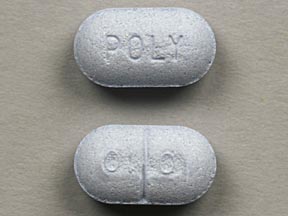Chlorpheniramine/phenylephrine/pyrilamine Interactions
There are 570 drugs known to interact with chlorpheniramine/phenylephrine/pyrilamine, along with 11 disease interactions, and 2 alcohol/food interactions. Of the total drug interactions, 39 are major, 528 are moderate, and 3 are minor.
- View all 570 medications that may interact with chlorpheniramine/phenylephrine/pyrilamine
- View chlorpheniramine/phenylephrine/pyrilamine alcohol/food interactions (2)
- View chlorpheniramine/phenylephrine/pyrilamine disease interactions (11)
Most frequently checked interactions
View interaction reports for chlorpheniramine / phenylephrine / pyrilamine and the medicines listed below.
- Benicar (olmesartan)
- C-Phen DM (chlorpheniramine / dextromethorphan / phenylephrine)
- Deconex (guaifenesin / phenylephrine)
- Flagyl (metronidazole)
- Flexeril (cyclobenzaprine)
- Lodine XL (etodolac)
- Lodrane 24D (brompheniramine / pseudoephedrine)
- Motrin IB (ibuprofen)
- Naprosyn (naproxen)
- Norel SR (acetaminophen / chlorpheniramine / phenylephrine / phenyltoloxamine)
- Pepcid AC Maximum Strength (famotidine)
- Premarin (conjugated estrogens)
- Protonix (pantoprazole)
- Prozac (fluoxetine)
- Reglan (metoclopramide)
- Ultram (tramadol)
Chlorpheniramine/phenylephrine/pyrilamine alcohol/food interactions
There are 2 alcohol/food interactions with chlorpheniramine / phenylephrine / pyrilamine.
Chlorpheniramine/phenylephrine/pyrilamine disease interactions
There are 11 disease interactions with chlorpheniramine / phenylephrine / pyrilamine which include:
- depression
- cardiovascular disease
- anticholinergic effects
- asthma/COPD
- cardiovascular
- renal/liver disease
- glaucoma
- liver disease
- BPH
- diabetes
- glaucoma
More about chlorpheniramine / phenylephrine / pyrilamine
- chlorpheniramine/phenylephrine/pyrilamine consumer information
- Compare alternatives
- Drug images
- Side effects
- Dosage information
- During pregnancy
- Drug class: upper respiratory combinations
- En español
Related treatment guides
Drug Interaction Classification
| Highly clinically significant. Avoid combinations; the risk of the interaction outweighs the benefit. | |
| Moderately clinically significant. Usually avoid combinations; use it only under special circumstances. | |
| Minimally clinically significant. Minimize risk; assess risk and consider an alternative drug, take steps to circumvent the interaction risk and/or institute a monitoring plan. | |
| No interaction information available. |
See also:
Further information
Always consult your healthcare provider to ensure the information displayed on this page applies to your personal circumstances.


